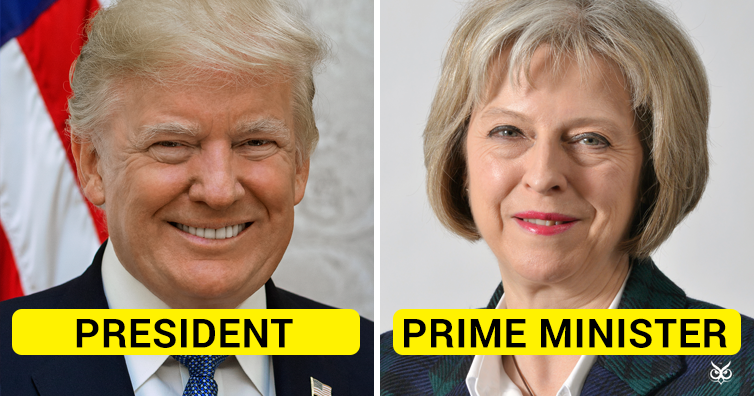We all know that some countries have Presidents while others have Prime ministers. Of course, world leaders can have other titles as well (such as chancellors and premiers), but the most common ones are the two in discussion.
The most notable example, is the United State’s President and the United Kingdom’s Prime minister. But have you ever wondered what’s the difference between these two titles?
Well, it’s time to find out.(the article continues after the ad)
Prime Minister
By definition, a Prime minister must command a legislative majority. This means that in a parliamentary system, the Prime minister is the head of the government and he/she will be the one responsible for appointing cabinet officials, set the national agenda and govern at the best interest of a coalition of parties. In this system, the President – if any -, servers pretty much as a ceremonial heads of state. But if the Prime minister loses the legislative mandate, the opposition may call for a vote of confidence (a procedure to remove the government) and in that case, the President will be called to formally dismiss the the legislative body of the country and schedule new elections. In constitutional monarchies, the role of the President is filled by the royals, either a King or a Queen.
President
In contrast to the Prime minister being the head of the government, the President is usually considered to be the head of state. The concept of the President being both the head of the state and the head of the government dates back to the British colonial structures that were used in North America. During that time, the leaders of the colonial councils as well as the heads of some state governments were called Presidents – a title that presiding representatives would carry at the Continental Congress. However, when the Presidency of the United States was created with the US Constitution, those powers would significantly increase. This is what led historian Arthur M. Schlesinger, Jr. to describe the modern presidential office as the “imperial presidency.” Still though, there are some separation in regards to the power. For example, the US President cannot introduce legislation; this is done only through the Congress.
Of course, these differences can vary greatly from country to country. For instance, France givens significantly more power to the President that its American counterpart. In Russia, since 1999 when Vladimir Putin was appointed as Prime minister and a year later, was elected as a President, that balance of executive power has basically resided in whichever of the two roles Putin was filling at the time.
If you like what you read, then you will definitely love this one: This Is The Difference Between A ‘Font’ And A ‘Typeface’
Photo: Wikimedia, Wikimedia
Photoshop: I’m A Useless Info Junkie
Sources: What’s the Difference Between a President and a Prime Minister? | The U.S. President vs. Britain’s Prime Minister: Role Similarities & Differences



